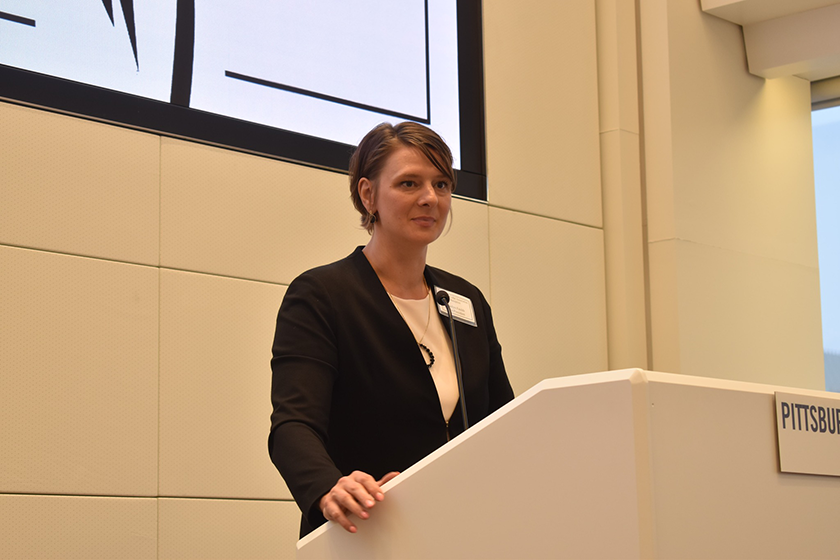PA Federal Business Decisions Volume 18A, No. 2
Henry M. Sneath, Business Decisions Editors (Originally published in the Summer 2014 edition of the Pennsylvania Bar Association’s Civil Litigation Update)
Third Circuit Amends Standard for “Exceptionality” in Awarding Attorneys’ Fees Under Section 35(a) of the Lanham Act by Eliminating Culpability Requirement
In Fair Wind Sailing v. Dempster, Nos. 13-3305 and 14-1572, 2014 U.S. App. LEXIS 17118 (3d Cir. Sept. 4, 2014), the Third Circuit adopted the United States Supreme Court’s interpretation of “exceptionality” as set forth in the Octane Fitness, LLC v. Icon Health & Fitness, Inc., 134 S. Ct. 1729 (2014); thereby, amending the standard for finding “exceptionality” under Section 35(a) of the Lanham Act, 15 U.S.C. § 1117(a), in awarding attorneys’ fees.
Fair Wind sued Defendants alleging claims for “trade dress” infringement under Section 43(a) of the Lanham Act, common law tortious interference and common law unjust enrichment. The Third Circuit affirmed the U.S. District Court of the Virgin Islands, which had granted Defendants’ motion to partially dismiss the complaint, finding that Fair Wind failed to properly state claims for its trade dress infringement and unjust enrichment counts. Fair Wind voluntarily dismissed its tortious interference claim following the dismissal of the other two claims.
Following the dismissal of Fair Wind’s complaint, Defendants moved for attorneys’ fees under Section 35(a) of the Lanham Act and Title 5, Section 541 of the Virgin Islands Code. The district court determined that Defendants were entitled to an award of attorneys’ fees, relying solely on the Virgin Islands fee statute.
Section 35(a) of the Lanham Act permits the recovery of reasonable attorneys’ fees only in exceptional cases. 15 U.S.C. § 1117(a). However, the Third Circuit recognized that the statute does not define an “exceptional case.” Previously, in determining whether a case was “exceptional” under Section 35(a), a district court was required to first decide whether the defendant engaged in any culpable conduct. The second step was deciding whether the circumstances were “exceptional” enough to warrant a fee award.
While the Fair Winds case was on appeal, however, the United States Supreme Court decided Octane Fitness, LLC v. Icon Health & Fitness, 134 S. Ct. 1749 (2014) in which the Court analyzed the circumstances in which fees may be awarded under Section 285 of the Patent Act. Recognizing that Section 285 of the Patent Act was identical to Section 35(a) of the Lanham Act and that Congress referenced Section 285 in passing Section 35(a), the Third Circuit in Fair Winds determined that the Court was “sending a clear message that it was defining ‘exceptional’ not just for the fee provision in the Patent Act, but also for the fee provision in the Lanham Act as well.” The Octane Fitness Court had determined that “an ‘exceptional’ case is simply one that stands out from others with respect to the substantive strength of a party’s litigating position (considering both the governing law and the facts of the case) or the unreasonable manner in which the case was litigated. Thus, it is within a court’s discretion to find a case ‘exceptional’ based upon ‘the governing law and the facts of the case,’ irrespective of whether the losing party is culpable.”
In adopting Octane Fitness’s definition of “exceptionality” into its interpretation of Section 35(a) of the Lanham Act, the Third Circuit held that “a district court may find a case ‘exceptional,’ and therefore award fees to the prevailing party, when (a) there is an unusual discrepancy in the merits of the positions taken by the parties or (b) the losing party has litigated the case in an ‘unreasonable manner.’” Thus, under the Octane Fitness standard, there is no longer a threshold requirement of culpability on the losing party’s part in determining the award of attorneys’ fees under Section 35(a) of the Lanham Act in the Third Circuit. The determination of whether a case is “exceptional” is to be made on a case-by-case basis in which the district court will consider the totality of the circumstances.
Finding that the district court was better suited to assess the award of attorneys’ fees given its knowledge of the instant litigation and parties, the Third Circuit vacated the award of attorneys’ fees and remanded it back to the district court to determine whether the circumstances qualify as an “exceptional” case under Section 35(a) of the Lanham Act and the Octane Fitness standard.
Third Circuit Declines to Make Obtaining Injunctive Relief Easier in False Advertising Case: Appellate Court Refuses to Extend Presumption of Irreparable Harm to Party Seeking Preliminary Injunction under Lanham Act
The United States Court of Appeals for the Third Circuit recently upheld a lower court’s decision not to extend a presumption of irreparable harm to a party seeking a preliminary injunction under the Lanham Act (hereinafter “the Act”). Specifically, in Ferring Pharms., Inc. v. Watson Pharms., Inc., No. 13-2290, 2014 U.S. App. LEXIS 16426 (3d Cir. Aug. 26, 2014), the Court held that a party seeking injunctive relief under the Act must demonstrate that it is “likely” to suffer irreparable harm if an injunction is not granted.
The case involved a claim by a pharmaceutical company that one of its competitors had falsely advertised the competing hormone therapy drugs marketed by the respective companies. Plaintiff sought relief under the Act, including a preliminary injunction to preclude Defendant’s promoting physician from making further false statements about the products. To succeed in obtaining injunctive relief under the Act a party must demonstrate that it is likely to succeed on the merits, that it is likely to suffer irreparable harm in the absence of injunctive relief, that the balance of equities tips in its favor, and that an injunction is in the public interest. Id. at *11.
The Plaintiff disagreed with the lower court’s refusal to presume that irreparable harm should be presumed in Lanham Act comparative false advertising cases, and that the lower court erred in declining to afford it that presumption.
In affirming the decision of the lower court, the Third Circuit stated, “this Court has never held that a plaintiff seeking a preliminary injunction pursuant to a Lanham Act false advertising claim is entitled to a presumption of irreparable harm.” Id. at *12. The Court noted the justification which sister circuits have used to apply the presumption; namely, 1) a misleading or false comparison causes that product harm by reducing its value in the mind of the consumer, and 2) the harm necessarily caused to reputation and goodwill is irreparable because it is virtually impossible to quantify in terms of monetary damages. Id. at *14.
Despite the Court’s recognition of why other circuits may extend the presumption to the moving party, the Third Circuit applied the recent United States Supreme Court decisions in eBay Inc. v. MercExchange, LLC, 547 U.S. 388, 126 S.Ct. 1837 (2006) and Winter v. NRDC, Inc., 555 U.S. 7, 129 S.Ct. 365 (2008), to support its conclusion. The Third Circuit reasoned that although the above Supreme Court cases involved patent and copyright infringement claims, the guiding principles of equity underlying the decisions were similarly applicable to cases brought pursuant to the Lanham Act. Thus, the Court held, “[i]t follows that a court is not free to depart from traditional principles of equity merely because it believes such a departure would further a statute’s policy goals, such as, in the case of Lanham Act claims, compensating plaintiffs for harms that may be difficult to quantify.” Id. at *27.
In order to succeed in obtaining injunctive relief for a claim under the Lanham Act, the Third Circuit has recently concluded that a party must now convince the court, in part, that it is likely to suffer irreparable harm if an injunction is not granted.
Third Circuit Examines a Trial Court’s Jurisdiction to Enforce Settlements Under Rule 60
The Third Circuit recently addressed a procedurally vexing question: to what extent does a trial court retain jurisdiction to enforce a settlement agreement after a judgment has been entered? In Bryan v. Erie County Office of Children & Youth, 752 F.3d 316 (3d Cir. 2014), Judge Fuentes held that a district court has ancillary jurisdiction to not only enforce a judgment pursuant to Rule 60, but to declare a judgment satisfied under the terms of a settlement agreement.
In Bryan, prior to the verdict, the parties agreed to a “high-low settlement,” meaning the parties agreed to both a floor and a ceiling for the amount at issue, irrespective of the actual verdict. The settlement agreement was never made of record and the trial proceeded to verdict. The verdict came back roughly three times higher than the ceiling of the settlement agreement. Plaintiff then entered judgment in the amount of the verdict and Defendant issued a check for the agreed-upon “high” settlement figure. Despite payment pursuant to the terms of the settlement agreement, Plaintiff claimed that Defendant breached a confidentiality provision of the settlement agreement and demanded full payment of the judgment.
Naturally, Defendant disputed the alleged breach and filed a Rule 60(b) motion, requesting the trial court to mark the judgment satisfied. Judge McLaughlin ultimately decided that he lacked jurisdiction to enforce a settlement agreement that was a) not of record and b) not included in an order pursuant to Kokkonen v. Guardian Life Ins. Co. of America, 511 U.S. 375 (1994). Perhaps most importantly, the trial court reasoned that, because there was an already-final judgment in the matter, it had no jurisdiction to determine the validity of the judgment under Rule 60. In effect, Judge McLaughlin held that Defendant would have to initiate a state court action to enforce the settlement agreement.
Upon review, the Third Circuit reversed and held that the district court had ancillary jurisdiction to decide the issue. Although a Rule 60(b)(5) motion does not “affect the judgment’s finality or suspend its operation” (and is thus not part of the original action), the trial court’s reasoning would preclude jurisdiction to decide any Rule 60(b)(5) motions. In the same way that a district court has jurisdiction to enforce a judgment, it must have jurisdiction to declare a judgment satisfied. On occasion, as in this case, determining whether a judgment has, in fact, been satisfied requires review of matters under the court’s ancillary jurisdiction. While examination of the settlement agreement “formed a contract dispute distinct from the federal action […] this contract dispute stood between the Court and resolution of the Rule 60 motion, and, by extension, the enforcement of the jury’s verdict on the underlying claim. The Court, therefore, had ancillary jurisdiction to decide the dispute.”
Brushed Off: U.S. District Court Dismisses Vacuum Warranty Claims for Lack of Notice Under U.C.C. Article 2
In In re Shop-Vac Mktg. & Sales Practices Litig., No. 4:12-md-2380, 2014 U.S. Dist. LEXIS 98075 (M.D. Pa. July 17, 2014), Judge Kane of the U.S. District Court of the Middle District of Pennsylvania considered whether plaintiffs in an MDL case had pleaded actionable warranty claims under U.C.C. Article 2, the Magnuson-Moss Warranty Act (the “Act”), and state consumer fraud statutes. The case alleges that vacuums purchased by the plaintiffs fell short of the defendants’ representations regarding the vacuums’ horsepower and tank capacity. Id. at 5-6. Among the various issues considered by the court was the sufficiency of the notice provided by one of the plaintiffs, who filed suit before providing the defendants with notice of the alleged defects. Id. at 26-27. It was the plaintiff’s position that prior notice was unnecessary because the filing of the complaint was adequate notice in the absence of prejudice to the defendants, and that the defendants otherwise had constructive notice of the defects through other lawsuits. The court rejected both of these arguments.
In finding that prior notice was required to sustain the breach of warranty claims under U.C.C. Article 2, the court found that the “notice” requirement would be completely eviscerated if a lawsuit were deemed to constitute adequate notice. Id. at 27. Additionally, the court determined that the defendants’ general awareness of the alleged defects through the notice provided by the other plaintiffs did not constitute proper notice because such notice did not pertain to the “plaintiff’s actual transaction.” Id. The court, therefore, dismissed with prejudice the plaintiff’s express and implied breach of warranty claims, both of which hinged on the plaintiff providing pre-litigation notice to the defendants under U.C.C. Article 2. Id. at 32. For this same reason, the court also dismissed the plaintiff’s implied warranty claim under the Act, as that claim depended on the viability of the state law warranty claims asserted by the plaintiff. Id. at 37. The court declined, however, to dismiss any of the plaintiffs’ claims under the state consumer fraud statutes, finding that there were sufficient allegations to withstand a motion to dismiss, and that the issue of the reasonableness of the plaintiffs’ beliefs regarding the alleged misrepresentations could not be resolved at the motion-to-dismiss stage. Id. at 39-41.
As for the warranty claims of the other plaintiffs, the court permitted them to proceed. In doing so, the court found that the reasonableness of the notice provided by the plaintiffs presented a fact issue; as did whether the vacuums actually performed as the defendants allegedly represented. Id. at 25-32. As such, the court did not dismiss the U.C.C. warranty claims. Similarly, the court declined to dismiss the claims under the Act to the extent that they were predicated on the U.C.C. warranty claims. Id. at 33-36. However, the court did not permit the plaintiffs to assert separate, express warranty claims under the Act for breach of a three-year written warranty because the plaintiffs failed to plead such a claim in the complaint.
Western District of Pennsylvania Rejects Motions to Dismiss in Carpet Cleaning Battle
In Peek v. Whittaker, 2014 U.S. Dist. LEXIS 70461 (W.D. Pa. May 22, 2014) (Opinion by J. Hornak), the District Court for the Western District of Pennsylvania addressed various issues pertaining to alleged violations of the Dragonetti Act, the Lanham Act and unfair competition in a long standing battle between two carpet-cleaning companies.
Plaintiffs, who consisted of a Georgia businessman, Stephen Peek, a former employee of Defendants, Paul Offutt, and a business owned by Paul Offutt, “Clear Floor Care”, sued Defendants alleging that it improperly commenced a civil action against them in Pennsylvania state court without probable cause and based on knowingly false testimony.
The facts underlying the dispute were the following: after being fired from Whittaker Co. in 2008, Mr. Offutt began discussing the formation of a carpet cleaning company with Peek and Paul Stephenson, another employee who was terminated from Whittaker Co. Defendants subsequently filed the preceding state case alleging infringement of trade secret information and violations of the employment agreement with Offutt and Stephenson. The state court judge entered a preliminary injunction prohibiting the former employees from engaging in competing activity. Plaintiffs appealed the judgment and the Pennsylvania Superior Court affirmed the injunctive order.
After the post-preliminary injunction proceedings began and extensive discovery was taken, the evidence showed that there was no infringement of trade secrets as the cleaning fluid formula was not actually owned by Whittaker Co. Moreover, the evidence showed that the employees did not have access to the databases that contained the customer data and their laptops showed nothing that could be considered “a trade secret or confidential.” Following the disclosure of this information, Plaintiffs moved for summary judgment which was granted. The District Court Judge noted that the record was much different than that which was relied upon in granting the preliminary injunction.
Plaintiffs then filed suit against Defendants alleging violations of the Dragonetti Act for initiating a civil proceeding without probable cause, PUTSA (Pennsylvania Uniform Trade Secrets Act), the Lanham Act for false advertising and unfair competition, abuse of process and fraud.
With respect to the Dragonetti Act, the court outlined the requirements for probable cause and noted that with respect to Mr. Offutt, there was evidence that he may have been engaging in behavior that violated his non-compete agreement with Whittaker Co. However, with respect to Mr. Peek and “Clear Floor Care,” the court found that there was no probable cause to bring suit as Whittaker Co.’s allegation that they misappropriated trade secrets and confidential information fell flat following disclosure of evidence showing that no trade secret was owned by Whittaker and confidential customer lists were not taken by the employees. The court therefore granted Defendants’ motion to dismiss only with respect to Mr. Offutt but not with respect to Mr. Peek and “Clear Floor Care.”
The court also found that Plaintiffs had a valid claim for abuse of process given that Defendants obtained a preliminary injunction using false evidence with the intent of precluding Plaintiffs from competing in the industry.
With respect to the PUTSA claim for attorney’s fees under Section 5305, the Court granted Defendants’ motion to dismiss as neither the Plaintiffs nor the court could cite case law indicating that Section 5305 creates a standalone cause of action. Given that Plaintiffs did not move for attorney’s fees following the lower court’s granting of summary judgment, their claim in the separate litigation did not constitute a valid claim.
The court then moved to the Lanham Act allegations under Section 1125(a)(1) noting that the section provides two bases of liability – false association and false advertising. Given the facts at bar, the court found that relief was being sought under the false advertising Section 1125(a)(1)(B). Given that Defendants knowingly made false statements about their own products (i.e. that they were trade secrets) then proceeded to “advertise” the result of the preliminary injunction in order to deceive Plaintiffs’ prospective customers, the Court found that Plaintiffs’ claim was plausible and denied Defendants’ motion to dismiss the Lanham count. The Court did require, however, that Plaintiffs submit within 10 days, a declaration setting forth facts outlining how the goods allegedly made by Whittaker Co. traveled in interstate commerce. If the Plaintiffs could not satisfactorily demonstrate that the goods traveled in interstate commerce, the Court noted that it would dismiss the Lanham Act claim.
Regarding the unfair competition count, the court analyzed Pennsylvania’s definition together with the Restatement (Third) of Contracts, finding that the Pennsylvania definition including “misrepresentation”, resulting injury to “reputation” and “manner of doing business” was sufficiently alleged by Plaintiffs. Moreover, Plaintiffs adequately stated a claim under the Lanham act which, under Section 1125(a), is analogous to the Restatement’s definition of deceptive marketing. Defendant’s motion to dismiss as to this count was therefore denied.
As to the last count of fraud, the court granted Defendants’ motion to dismiss as Plaintiffs failed to state a plausible claim, holding that the Plaintiff neither received misrepresentations from Defendants nor relied upon the misrepresentations.
–Contributed by Cara Disheroon, Esq., Houston Harbaugh, Pittsburgh, Pennsylvania; cdisheroon@psmn.com







